Haiku Comics
A pebble tossed in the comics lake
Back in 2013, I taught a workshop to comics master’s degree students at the École européenne supérieure de l’image in Angoulême, France. The subject of the four-day workshop was comics based on fixed forms borrowed from poetry such as the sestina, the villanelle, or the sonnet. (You can find my own sestina and villanelle comics in Six Treasures of the Spiral: Comics Formed under Pressure).
At that point, a form of poetry I had not played around with was the haiku. Its brevity and relatively simple rules made it a good candidate for a warm-up activity.
Before starting, we looked at a few examples of haiku comics that already exist to see what ways the form has been adapted to our medium. One of the things I find interesting about the 5-7-5 syllable structure is that there are a number of ways to think about how that might translate to comics.
I found two very different haiku comics online to start our exploration. The first is by John Porcellino and you might describe it as evoking a haiku rather than adapting one faithfully: the sizes of the three panels seem to refer to the 5-7-5 structure, and the text, though not observing the syllabic rules, observe many other principles of the haiku: the present tense, a reference to nature, the observation of a fleeting moment. One student pointed out that the framing meta-panel could be seen as uniting the comic in a single, cosmic instant.
The next example, a webcomic by Mysh called Imaginary Encounters, uses the haiku as a base structure for a series of autobiographical one-page stories. In this case, the text is a fairly orthodox haiku (even if the subject matter, a dreamy gay travelogue, is far from traditional!) but the comics seems to mainly echo the three line structure in the form of three equally-sized tiers. One thing I particularly like about this example is the ironic counterpoint between the phrase “mountain top”, a fairly classic nature reference, and the image of two lovers looking out their “mountain,” the top-floor of window of a building. In another odd touch, we see that the place where they are is utterly flooded.
Our first batch of haiku comics
We discussed other ways the syllable structure might be adapted, generally agreeing that Porcellino’s relative size approach worked well. As a counter-example: we all agreed that though a three-page comic of 5 panels, 7 panels, 5 panels would be feasible it would be too long and against the spirit of a haiku. I left it up to each student to decide which aspects of haiku to adapt and which to disregard.
Here are a few examples which came out of that class:
I also made a few attempts myself. In the first one I tried to write a traditional haiku, referencing the present, a season, a moment in time, and so on. That said, I couldn’t help put a modern, pop culture twist to it, since I was drawing all this in spitting distance of the Musée de la Bande Dessinée, which has a statue of Hugo Pratt‘s Corto Maltese keeping watch along the footbridge across the Charente river:
You can see that I used the 5-7-5 relative panel height principle here, cutting the space from top to bottom as the eye descends.
For the second comic, I flipped it sideways, thinking that was a more natural movement for the gaze of the haiku poet, surveying the landscape around her. An unusual aspect of this art school is that it is located on a small island right on the Charente, so when you step out, as I did, to the coffee machine, you find yourself surrounded by rushing water on all sides. It is, in fact, about as haiku-inspring a moment as you are likely to find in the middle of a city. It occurred to me that it might be interesting to translate the syllable count in to drawn lines, so in this second version I drew five lines in the first panel, seven in the second, and five again in the last. I stood in the middle of the river and looked first to my left, then straight ahead, then right:
You may have noticed that I also used the words left, center, and right, in the three lines of text. The crane referred to and minimally evoked in the drawing is a construction crane over a new student center being built across the river. Of course, the association with the bird is intentional. It’s interesting that my student Lise did the same play with grue (above), which, as in English, refers to both the bird and the construction equipment.
I drew both of these comics quickly, without pencilling or much planning, with a fountain pen on letter size (A4) paper. I had in mind an interesting detail I came across which is that a haiku is intended to be read in one breath: how can we translate that idea to drawing or looking at drawings?
After I scanned the pages, though, I had the idea that the second one might work better with a less rigid panel height, something more organic and evocative, again, of the haiku’s syllable structure:
2 x 5 drops of rain
A few months after making them, I showed my haikus to the poet Jacques Jouet of Oulipo and he surprised me by asking why the third panel of the Corto Maltese haiku had “2 x 5” drops of rain. I was confused until I looked at the page again: as it happens, if you count the raindrops in that comic you’ll see that the first panel has five raindrops, the second one seven raindrops and the last panel ten (or: “2 x 5”) raindrops.
It’s a total coincidence, but in Jacques’ honor I Photoshopped a Jouetian variant featuring properly syllabic raindrops:
Color versions
If you have read my collection Six Treasures of the Spiral, you might have noticed that these are not the versions of the haiku comics that are in the book. Though I appreciate the immediacy of these pen-drawn comics, I decided to re-draw them and to use color, swapping the spontaneity for a richer palette of textures and tones.
By the way, we made signed prints of these comics that Uncivilized Books sent out with pre-orders, you should feel free to ask me for one if you see me at a comics convention.1
The future of haiku comics
Since I initially shared a version of this post on my website in 2013, the practice of haiku comics has really taken off. Scholar and blogger (and Oubapo member-in-absentia) Thierry Groensteen translated my article into French and a Spanish-language online comics journal called Exégesis published it in Spanish shortly thereafter.
I’ve been pleased to see a number of cartoonists sharing haiku comics in recent years. It’s been a while since I’ve taught them myself but my friend David Lasky regularly offers haiku comics workshops in Seattle (and maybe online?). Follow him on Insta to be in the loop. Or you can watch his recent online workshop for SAW on their YouTube channel (where you can also check out my tritina comic workshop from a few years ago!)
On Substack, Grant Snider recently shared some evocative haiku comics about his family’s summer vacation.
Have you made a haiku comic? A tanka comic? A ghazal comic? Let me know!
follow-up informational post to come but I’ll be at SPX and CXC in September.


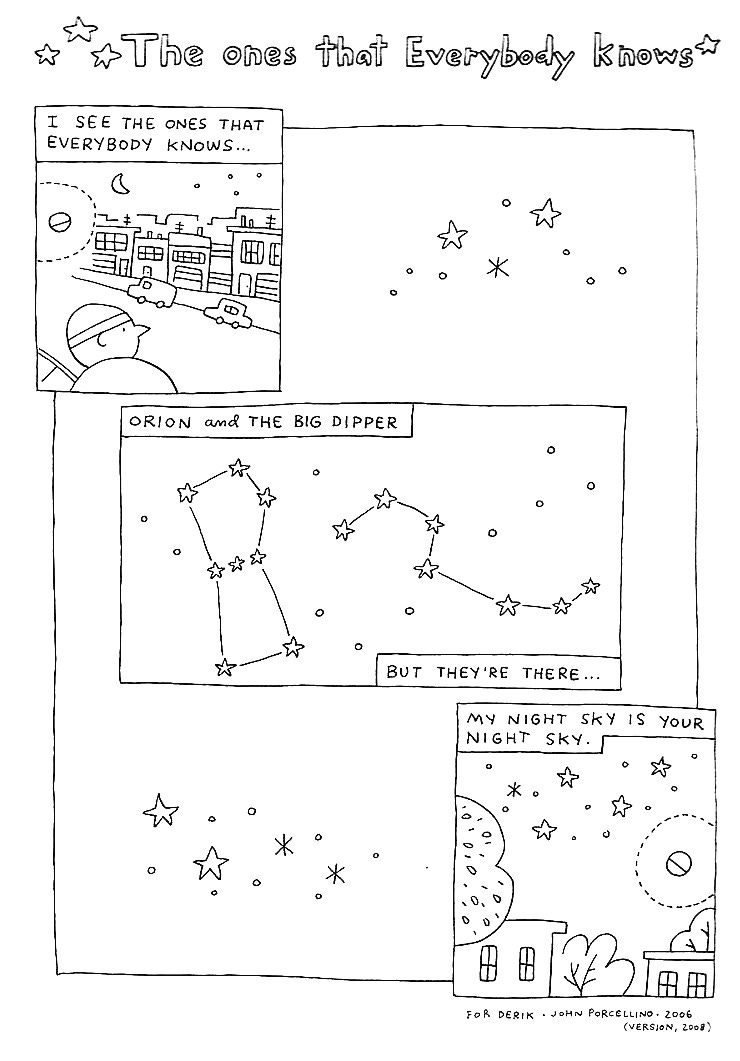
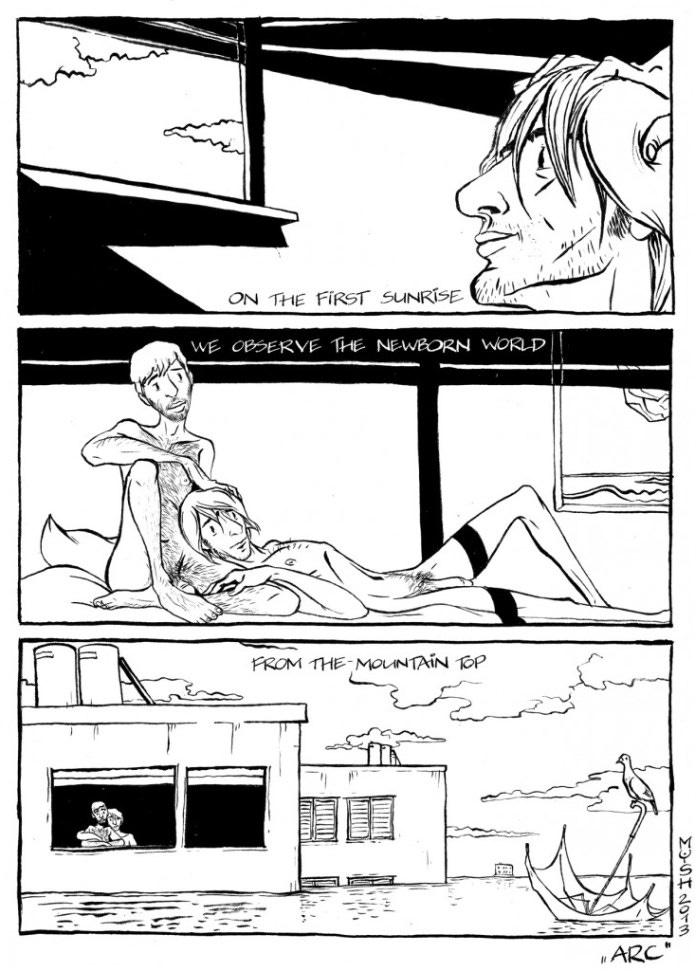
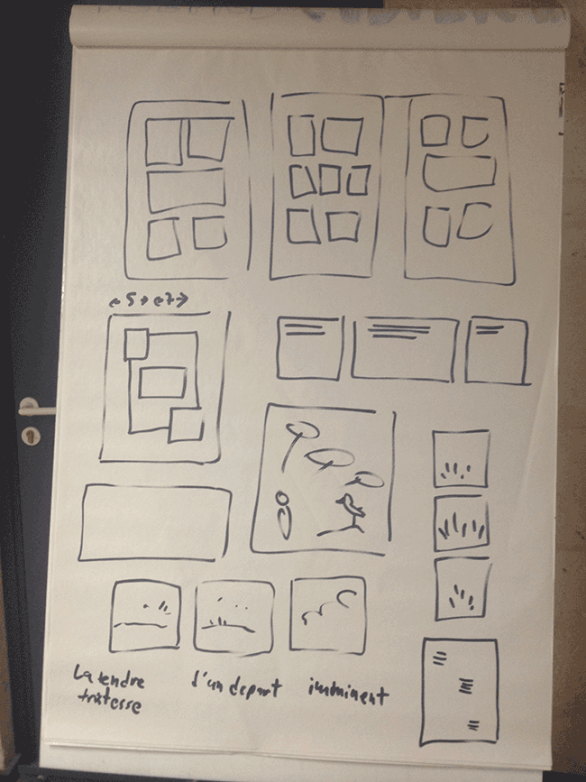
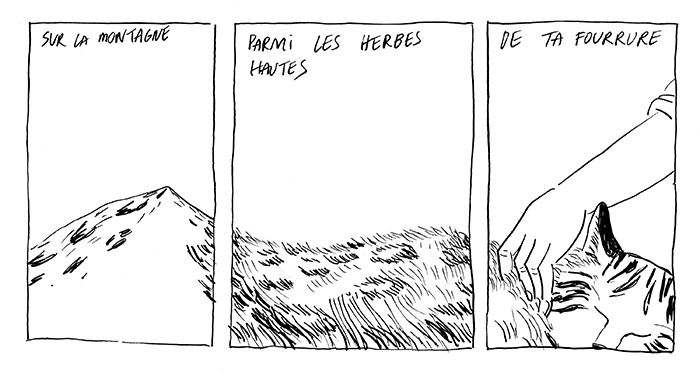
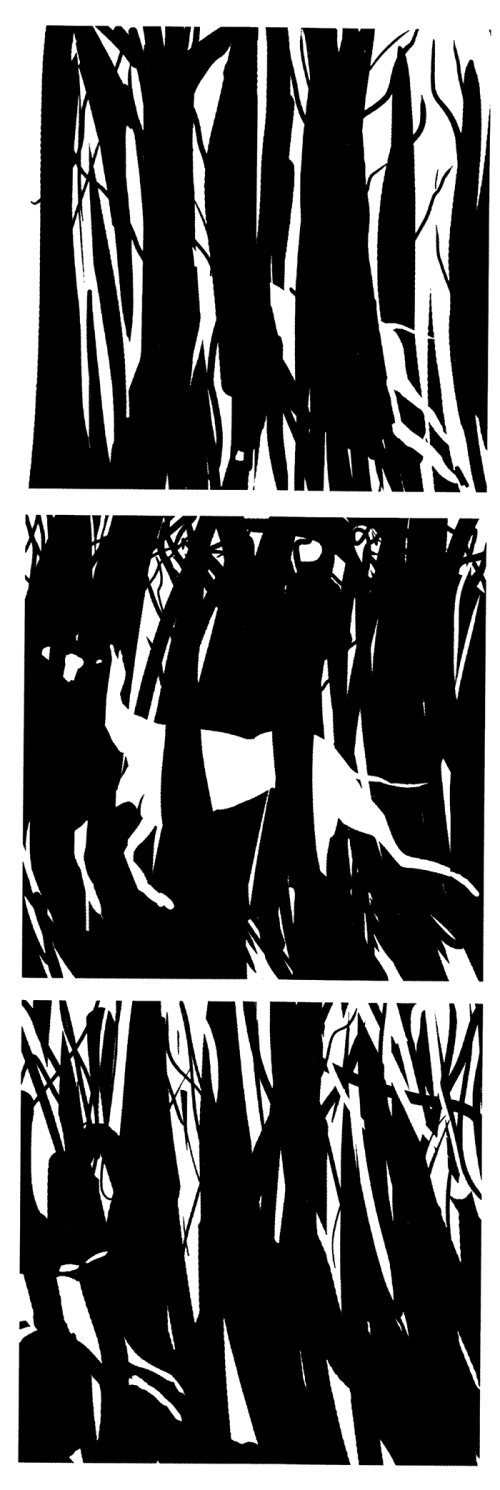

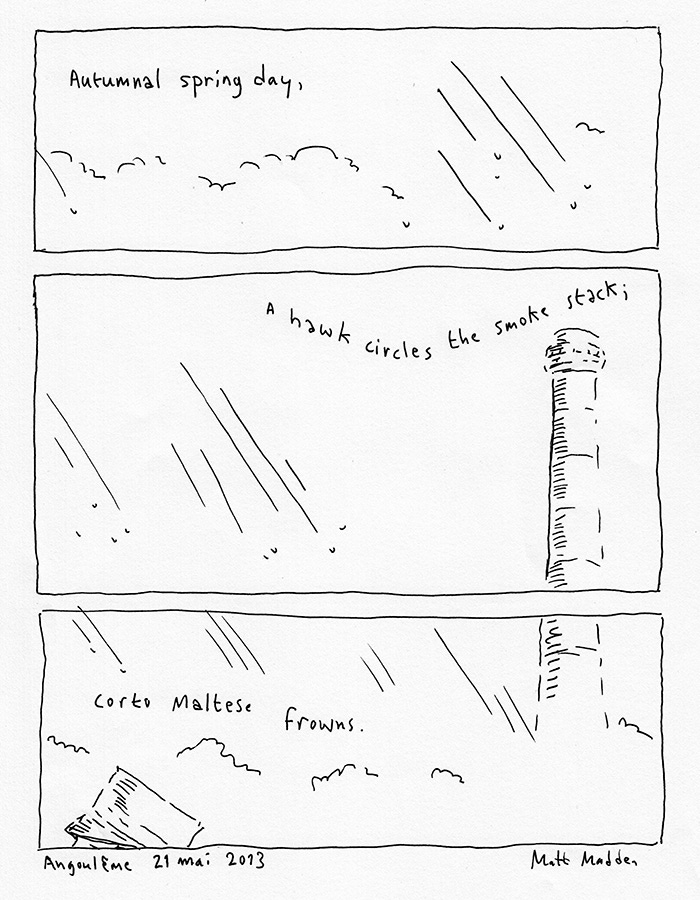
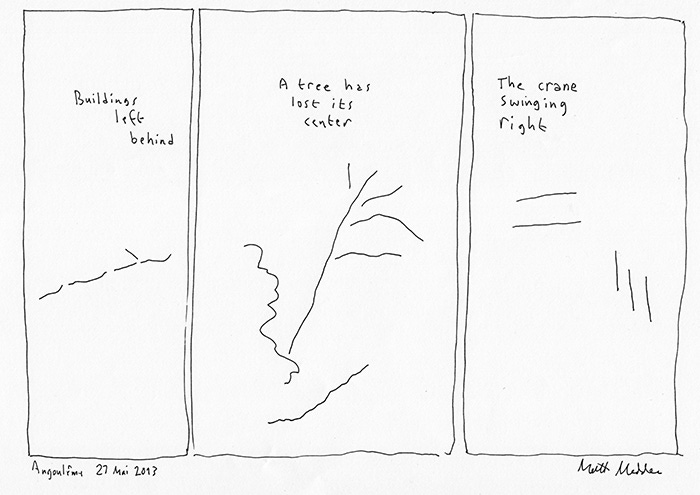
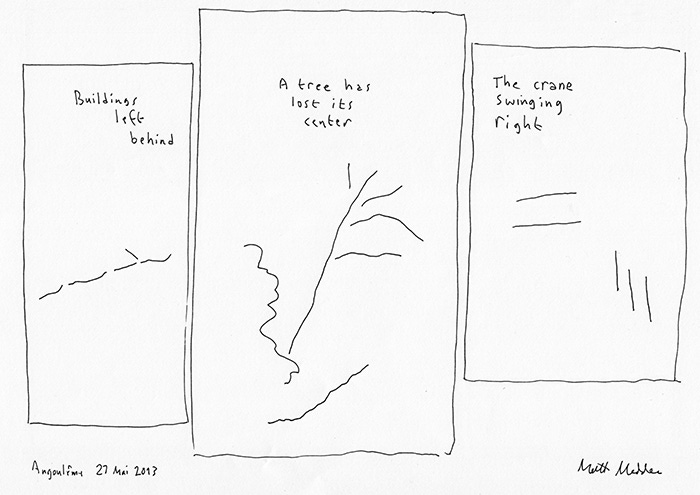
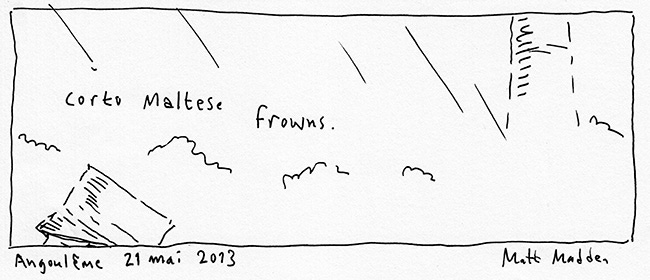

I love that one of the first issues of your newsletter I received after joining was dedicated to my creative obsession. I'm a haiku maniac, and for the past several years, I've been a haiku comic maniac, publishing them regularly in my newsletter as well as publishing one full collection in 2023, and having my second collection due out next month.
I've also enjoyed experimenting with turning haiku from Bāsho, Issa, Jack Kerouac, and Richard Wright into comics.
I love the comics you shared here, especially the ones by Lisa Làmarche and Elisabeth Holleville.
One of my favorite formats for haiku is a four-panel spread where the last panel is silent, giving the reader time to sit with the poem they just read.
Thank you so much for sharing these comics here. I just ordered "Six Treasures of the Spiral," and can't wait to read it!
I’ve made a variation of haiku comics called senryu comics. The difference between senryu and haiku is senryu are all about human foibles vs nature.